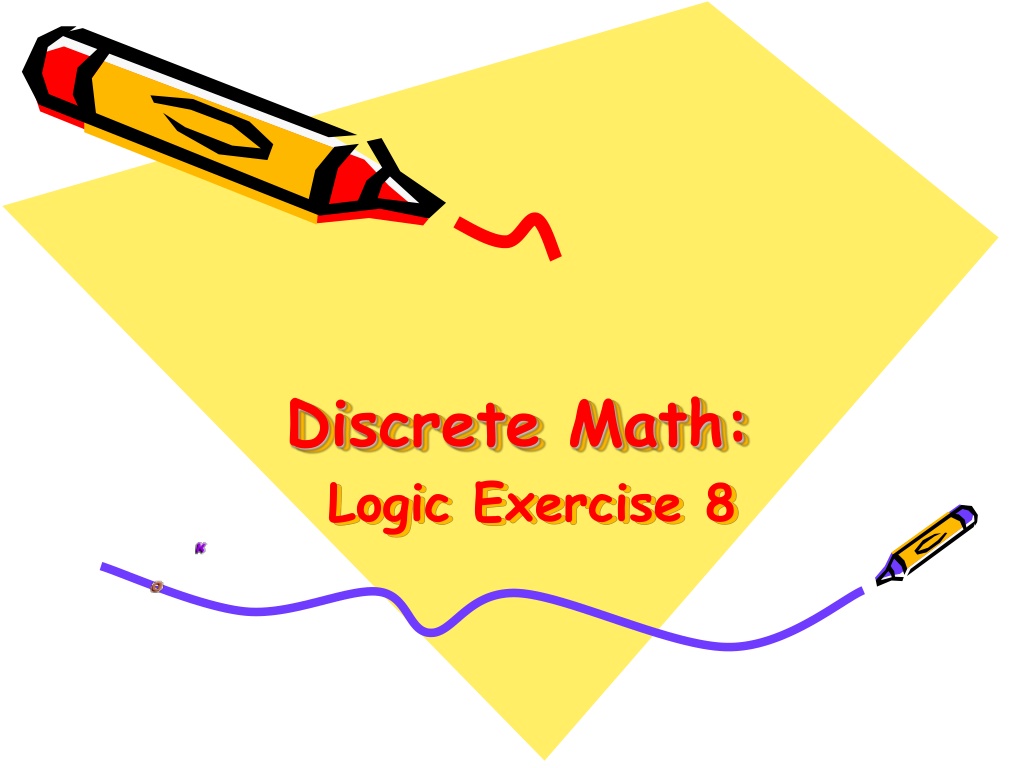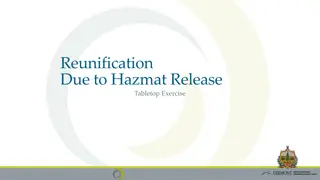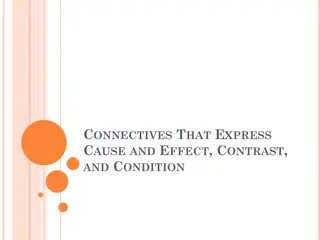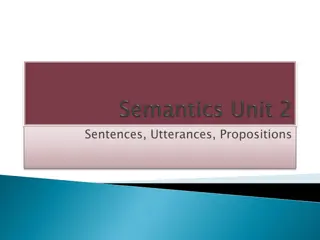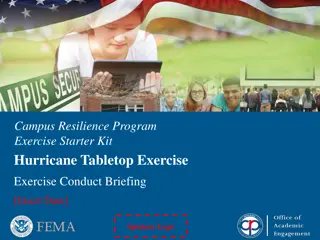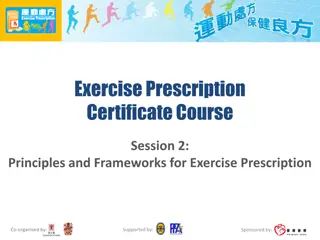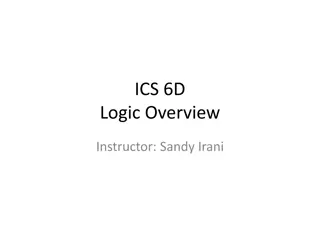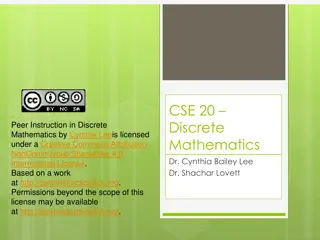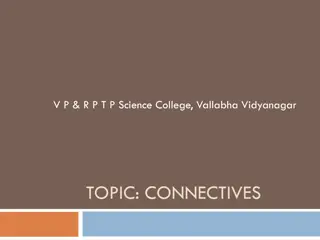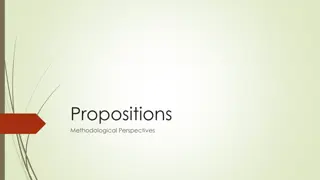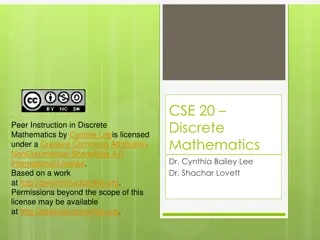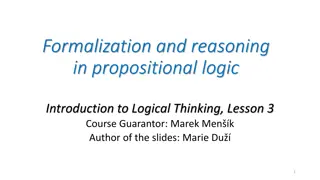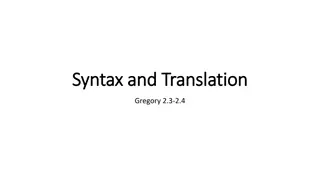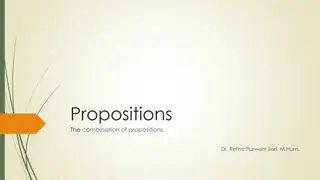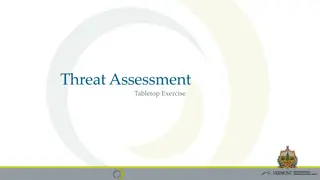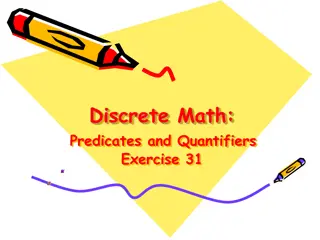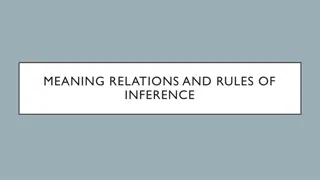Propositions and Logical Connectives Exercise Solutions
In this exercise, propositions involving grizzly bears, hiking safety, and ripe berries are formulated using logical connectives. Solutions are provided for various scenarios including conjunctions, conditionals, biconditionals, and more. The explanations offer a structured approach to understanding how different statements can be interconnected using logical operators.
Download Presentation

Please find below an Image/Link to download the presentation.
The content on the website is provided AS IS for your information and personal use only. It may not be sold, licensed, or shared on other websites without obtaining consent from the author. Download presentation by click this link. If you encounter any issues during the download, it is possible that the publisher has removed the file from their server.
E N D
Presentation Transcript
Discrete Math: Logic Exercise 8
Exercise Let p, q, and r be the propositions p : Grizzly bears have been seen in the area. q : Hiking is safe on the trail. r : Berries are ripe along the trail. Write these propositions using p, q, and r and logical connectives (including negations). a) Berries are ripe along the trail, but grizzly bears have not been seen in the area. b) Grizzly bears have not been seen in the area and hiking on the trail is safe, but berries are ripe along the trail. c) If berries are ripe along the trail, hiking is safe if and only if grizzly bears have not been seen in the area.
Exercise cont d) It is not safe to hike on the trail, but grizzly bears have not been seen in the area and the berries along the trail are ripe. e) For hiking on the trail to be safe, it is necessary but not sufficient that berries not be ripe along the trail and for grizzly bears not to have been seen in the area. f) Hiking is not safe on the trail when ever grizzly bears have been seen in the area and berries are ripe along the trail.
Solution a) "But" is a logical synonym for "and" (although it often suggests that the second part of the sentence is likely to be unexpected). So this is r p. b) Because of the agreement about precedence, we do not need parentheses in this expression: p q r. c) The outermost structure here is the conditional statement, and the conclusion part of the conditional statement is itself a biconditional: r (q f p) . d) This is similar to part (b): q p r.
Solution cont e) This one is a little tricky. The statement that the condition is necessary is a conditional statement in one direction, and the statement that this condition is not sufficient is the negation of the conditional statement in the other direction. Thus we have the structure (safe conditions) (conditions safe). Fleshing this out gives our answer: (q ( r p)) ( ( r p) q). There are some logically equivalent correct answers as well. f) We just need to remember that "whenever" means "if" in logic: (p r) q.
References Discrete Mathematics and Its Applications, McGraw-Hill; 7th edition (June 26, 2006). Kenneth Rosen Discrete Mathematics An Open Introduction, 2nd edition. Oscar Levin A Short Course in Discrete Mathematics, 01 Dec 2004, Edward Bender & S. Gill Williamson
